
Salty Sam’s Fun Blog for Children
Number 135
Herbs
Hello Everyone

Bill and Bob asked me the other day what the difference was between a herb and a plant.
l told them that basically a herb is a plant with special uses. lts leaves are used to flavour food or make medicines or perfumes.
A spice, by the way, also flavours food but is made from bark, roots, fruits, seeds or berries.
Throughout history, herbs were used to make medicines when there were no man-made drugs made in factories like there are today.
People who lived near water often got rheumatism (aching joints) and found that chewing on willow bark helped to ease the pain. This bark was the basis for what we now call aspirin.
Some herbs are good for you in small doses. Drinking sage tea can sooth a sore throat but sage can be poisonous if taken in very large doses.
Some very poisonous plants were used by monks in small doses many hundreds of years ago very successfully to make anaesthetic when they wanted to perform operations. Monks often helped people who were ill before there were doctors. (But we don’t know how many people they killed before they got the dosage right!)
ln ancient times before that, people would go to the ‘wise woman’ or ‘healer’ in the village to get medicines because she would have ancient knowledge of which herbs would help which ailments. These women were called ‘wise women’ or ‘witches’ and their ability to find cures seemed almost magical.
ln the Mediaeval Era, monks and nuns acquired this knowledge and also grew herbs in gardens. They began to call the wise women or witches evil because they wanted to discredit them (give them a bad name) and take their place in dealing with people who had problems. Some of the witches used their knowledge for good and some didn’t.
These gardens became known as physic gardens in mediaeval and Tudor times. They later developed into botanical gardens. Botanical gardens are gardens that have a huge variety of plants which are labelled so that visitors can see what they are – like Kew Gardens in West London for example.
Herb gardens didn’t just provide food and medicine though. Herbs were used to get rid of bad smells in the house, repel or kill insects such as flies and they could also be used to make substances to clean the house. ln fact, the plant called soapwort will lather up in water and can be used as a soap to wash skin, and it is said that sage will repel mosquitoes.
Auntie Alice grows a lot of herbs in her garden. She says that dried herbs are just not the same as fresh ones when you want to cook with them. She brings some of them inside for the winter because they would not survive the cold weather. She puts her bay tree in the green house and her basil on the kitchen window sill.
Actually, even people in flats (or lighthouses ![]() ) who don’t have a garden can grow herbs on their kitchen window sills.
) who don’t have a garden can grow herbs on their kitchen window sills.
Auntie Alice grows her mint in an old bucket (with a hole in the bottom) sunk into the ground. She says that if she doesn’t contain its roots, it will want to take over the whole garden. Some herbs are easier to grow than others!
ln the Second World War, people used to grow a lot of vegetables and also herbs for home remedies in their back gardens instead of grass and flowers. They called these ‘victory gardens’. Even the parks in the centre of towns and cities were dug up to grow corn and potatoes.
This was because during the war it was difficult and dangerous to import food from abroad on ships whilst the seas were full of mines (bombs in the sea that would explode if a ship ran into them); so as much food as possible had to be grown on every bit of land available.
ln recent years, growing fruit and vegetables in back gardens and on allotments has become very popular again as people want to eat fresh food and save money.
Some people are allowed to keep bees on their allotments and these bees help to pollinate the crops as well as provide honey for people to eat.
Sometimes people have to wait years before they can get an allotment, so they decide to turn inner city wasteland into community gardens. They are useful as well as beautiful.
Growing herbs outside the back door can be done even if you don’t have much space. They can be grown in pots and window boxes in yards or on balconies.
Bill and Bob have now decided to grow some more herbs in their vegetable patch.
Bye bye everyone – don’t forget to subscribe to my blog!
lf you like my blog, please support it by telling all your friends and followers about it.
Thank you!
And see you again next Fun Friday!
Love and kisses
Salty Sam

www.christina-sinclair.com

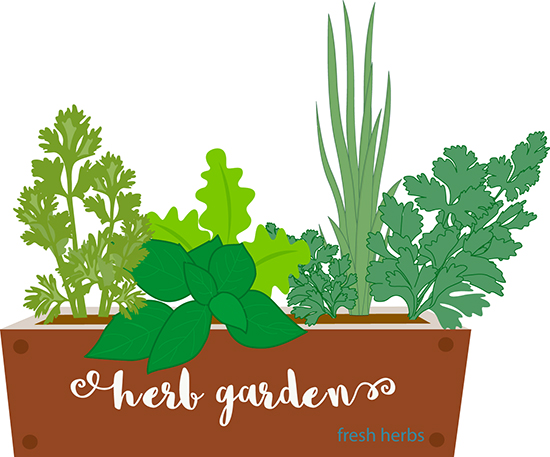
Bill and Bob’s Joke of the Week![]()
![]()
Bill: What did one bee say to her nosey neighbour?
Bob: l don’t know. What did one bee say to her nosey neighbour?
Bill: Mind your own bees nest!

Salty Sam © Christina Sinclair 2015
Unauthorized use and/or duplication of material from this blog without express and written permission from this blog’s author and owner is strictly prohibited.
Links may be used to www.christina-sinclair.com

Picture Gallery

Basil – a lot of the herbs that we grow come from Mediterranean regions and like free drainage-
but basil comes from the Far East and likes warm, wet weather

Parsley

Mint
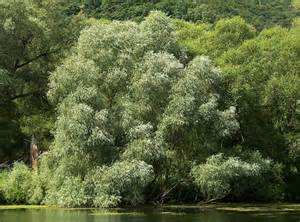
Crack willows do well by rivers – they were often planted to stabilize river banks

Every available piece of ground during World War II was used to grow food

A Tudor herb garden at Hampton Court Palace

A knot garden (late Elizabethan style)

A 17th century fuming pot would hold herbs
The pot was designed to perfume a room or repel mice or fleas or ‘neutralise sick air’
People didn’t understand at that time how disease spread through lack of hygiene
and thought disease came from ‘bad air’

A 17th century lavender pot

Hyssop could be used to relieve coughs

Rosemary is said to improve the memory – it is used a lot in cooking

Pineapple sage – yes the leaves do smell of pineapple
It comes from Mexico originally
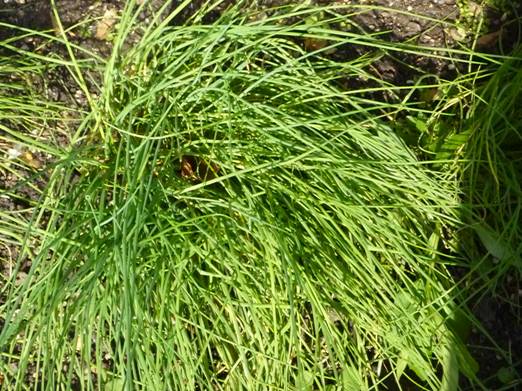
Chives are the smallest type of edible onion

Borage, also known as the starflower was used to treat a lot of different illnesses

Santolina is also called cotton lavender
It can be dried to be put in pot pourri and the yellow flowers can be used to make a bright yellow dye

In a botanical garden a lot of the plants are labelled
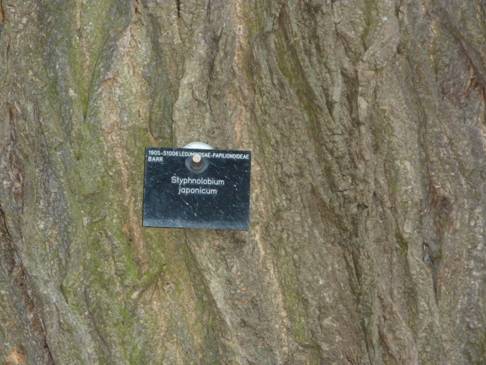
Japonica means native to Japan
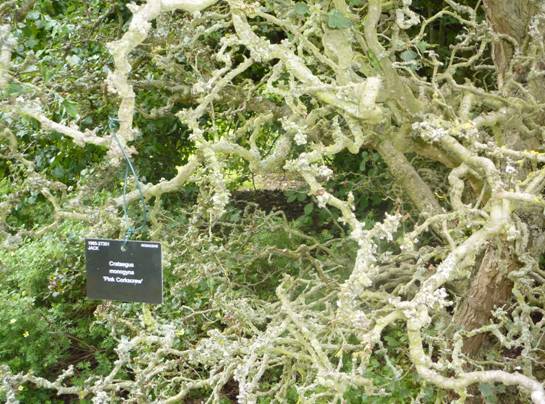
Labels are nailed on, hanging on or in the soil next to the plant
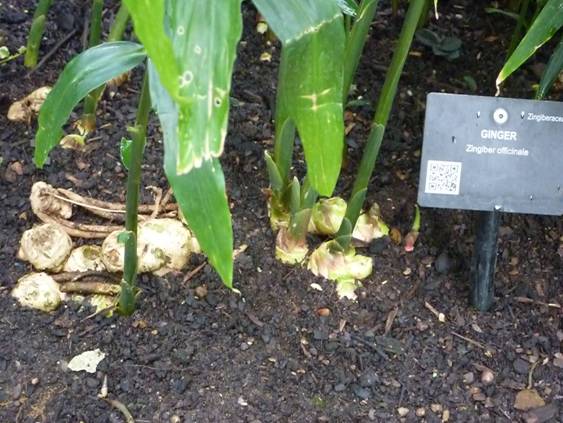
This is what ginger looks like when it is growing


 THE SALTY SAM NEWS DESK
THE SALTY SAM NEWS DESK

Bill and Bob were watching old children’s television programmes on You Tube the other day and they found one they liked called The Herbs.
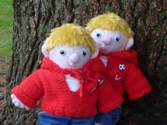
These are the main characters can you guess who they are?
P_r_l_y _h_ L_o_
D_l_ t_e _o_
B_y_e_f _h_ G_r_e_e_
S_g_ t_e _w_
M_ O_i_n _h_ _e_c_e_
T_e _h_v_s (_i_ p_p_l_)
L_d_ R_s_m_r_
S_r _a_i_
C_n_t_b_e _n_p_e_d
T_r_a_o_ t_e _r_g_n
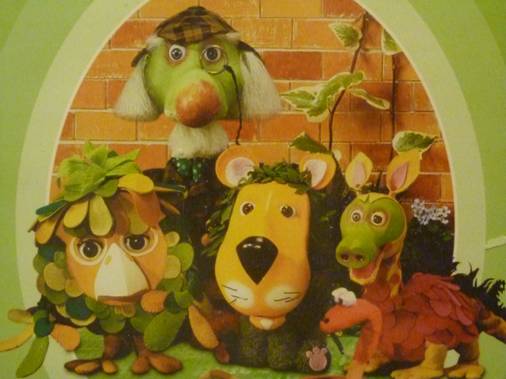

*********************
TO ADVERTISE ON THIS BLOG
PLEASE CONTACT:
christina.sinclair.ads@aol.co.uk
*********************


Recipe Spot
This is a recipe for a broad bean salad.
A lot of people don’t like broad beans because they find them dry and bitter, but this salad is tasty and sweet. You don’t need to go to the trouble of taking the skins off the beans; just use them as they come in the tin or take them out of their pods if you have grown them.

For each person mix together in a bowl:-
½ cup cooked, drained and cooled broad beans
4 cherry tomatoes cut in half
½ a spring onion chopped
20g cheddar cheese cut into cubes
1 teaspoon Baco croutons (optional)
1 tablespoon chopped herbs (e.g. parsley or basil)
1 heaped tablespoon of mayonnaise
Serve on a bed of shredded lettuce
Sprinkle some paprika over the top
(You can also add a clove of garlic into the mayonnaise as well for an extra kick if you like it.)
![]()
You could also add:
A tablespoon of sweet red pepper cut into tiny cubes
Avocado cubes
A few twists of pasta
A small handful of bean sprouts (Blog Post 79)
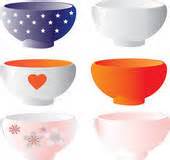
![]()
lf you are just beginning on your path as a vegetable gardener, broad beans are one of the easiest crops to grow as long as the soil they are growing in is not water-logged. You just push the seeds into the ground when the soil is warm enough in the spring and they will do the rest. They tolerate (put up with) most soils and weather conditions. The only thing you will need to do is stake them if they become quite tall (this means tie them to sticks so that they don’t flop over).
![]()
*Don’t forget to cover the tips of the sticks with film canisters or yoghurt pots filled with scrunched up newspaper for safety reasons – you don’t want to jab yourself with the top of the stick when you lean over.

BLOW MY FOGHORN!!!

PLUS
Salty Sam fans can join in with their comments and share them with children all over the world. You will need to ask permission if you are not an adult.
Enter your e-mail address to subscribe to my blog and receive new Salty Sam Blog Posts for free by e-mail every week. Your address will be kept private and will not be shared with any third party.
Sign me up at the side bar




lt’s the Weekend!

HOW TO MAKE A CHEF SET FOR YOUR TWELVE lNCH DOLL
SKIRT (KNIT ONE)
Using 3¼mm and red 4 ply yarn cast on 32 stitches
Knit 1 row, knit 1 row, knit 1 row, purl 1 row, purl 1 row, knit 1 row
Repeat these last 6 rows twice
Stocking stitch 18 rows
Continuing in stocking stitch decrease 1 stitch at the beginning of the next 2 rows (30 stitches)
Continue to knit in 1 x 1 rib
Knit 2 together each end of the next 2 rows (26 stitches)
Knit 2 rows of rib
Cast off
TO MAKE UP
Over-sew the back seam right sides together.
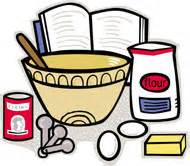
SWEATER FRONT AND BACK (KNIT TWO)
Using 3¼mm knitting needles and white 4 ply yarn cast on 20 stitches
Knit 1 row, knit 1 row
Sl1 k2 p2 k2 p2 k2 p2 k2 p2 k2 k1
Sl1 p2 k2 p2 k2 p2 k2 p2 k2 p2 k1
Sl1 p2 k2 p2 k2 p2 k2 p2 k2 p2 k1
Sl1 k2 p2 k2 p2 k2 p2 k2 p2 k2 k1
Repeat the last 4 rows 5 times
Garter stitch 12 rows (continue to slip 1 stitch at the beginning of each row)
Cast off

SWEATER SLEEVES (KNIT TWO)
Using 3¼mm knitting needles and 4 ply yarn cast on 14 stitches
Garter stitch 4 rows
Stocking stitch 26 rows
Cast off loosely
TO MAKE UP
Use over sew stitches along the seams.
Sew the shoulders only 1cm/½ inch in from the outer edge.
Attach the tops of the sleeves to the front and back making sure that they stretch to the full extent of the garter stitch yoke (the arm holes have to be big enough to get the sweater on the doll).
Then sew up the under arm and side seams.
Neaten all loose ends.
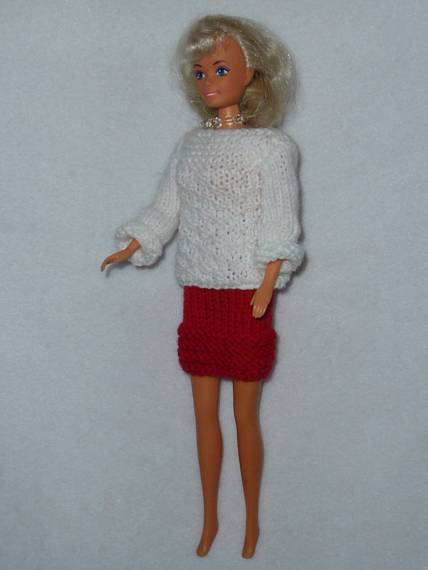
OVEN MITTS (KNIT TWO)
Using 3¼mm knitting needles and white 4 ply yarn cast on 10 stitches
Knit 6 rows of garter stitch
Change to red 4ply yarn
Knit 8 rows of stocking stitch
Knit 2 together each end of the next 2 rows of stocking stitch (6sts)
Cut off yarn with a length for sewing up
Thread the yarn through the stitches and sew up the side seam
*Of course you can use any colour yarn you like.

APRON
- Cut 2 pieces of fabric 13cm/5¼ inches by 6½cm/2½ inches.
- Attach the ends of 2 pieces of very narrow ribbon 21cm/8½ inches long 5cm/2 inches down from the top to the sides of one of the fabric pieces on the right side of the fabric.
- Sew the two pieces of fabric right sides together bottom and side seams only sandwiching the ribbon between using ½cm seams.
- Cut the bottom corners (to create a sharp pointed corner) and turn apron right side out.
- Turn the top down ½cm into the inside and incorporating the ends of a 12cm/5 inch length of ribbon inside the top corners sew across the top of the apron.

HAT
- Cut a piece of fabric 13cm/5¼ inches by 7cm/2¾ inches and a circle of fabric 14cm/5½ inches in diameter.
- Sew a line of running stitch around the top of the circle just in from the edge leaving the two ends of thread free.
- Fold the rectangle in half putting the two 7cm ends right sides together then sew a ½cm seam along the 7cm edge.
- Gather the circle up and ease the size to fit into the band then sew together using over sew stitches (make sure both pieces of fabric match right side to right side).
- Then pull the headband up to meet this seam and secure in place covering the raw edges – you can use the ends of the gathering thread to anchor the top of the band into place.
- Turn the hat the right way out.
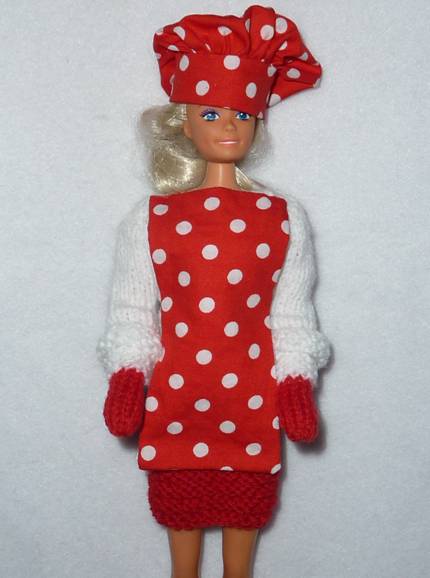
COOKERY BOOK
Cut a piece of thin card 4cm by 6cm and fold in half then glue a small rectangle of white felt to represent the pages onto the back cover of the book.
SAUCEPAN AND BEAKER
The saucepan is a small measuring cup covered in silver paint, the beaker is just a bottle top and the tray is a plastic box top covered in silver paint.

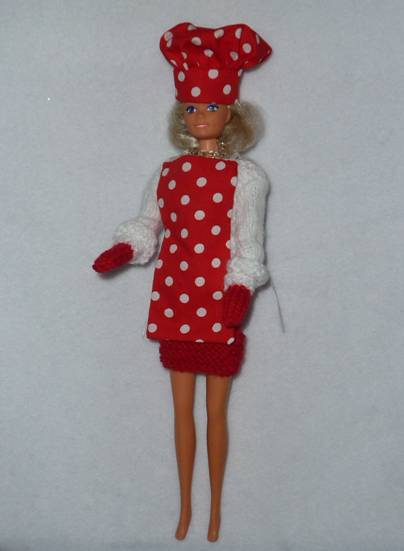
Please note that the material on this blog is for personal use and for use in classrooms only.
It is a copyright infringement and, therefore, illegal under international law to sell items made with these patterns.
Use of the toys and projects is at your own risk.
©Christina Sinclair Designs 2015

ANSWERS TO LAST WEEK’S WORKSEARCH
|
R |
||||||||||||||
|
F |
O |
R |
E |
S |
T |
|||||||||
|
A |
I |
|||||||||||||
|
D |
V |
M |
||||||||||||
|
H |
E |
D |
G |
E |
R |
O |
W |
|||||||
|
R |
U |
|||||||||||||
|
N |
||||||||||||||
|
T |
O |
W |
N |
F |
||||||||||
|
A |
V |
H |
I |
L |
L |
|||||||||
|
V |
I |
L |
L |
A |
G |
E |
||||||||
|
N |
L |
L |
||||||||||||
|
L |
D |
|||||||||||||
|
E |
||||||||||||||
|
Y |


Answers to the News Desk Quiz
Parsley the Lion
Dill the Dog
Bayleaf the Gardener
Sage the Owl
Mr Onion the Teacher
The Chives (his pupils)
Lady Rosemary
Sir Basil
Constable Knapweed
Tarragon the Dragon

Lady Rosemary and Sir Basil
Dill is a dog, Sage is an owl and Parsley is a lion

The Herbs created out of plants by the Bath’s Parks and Green Spaces Team in Somerset and displayed at the Chelsea Flower Show 2014


